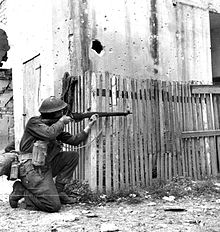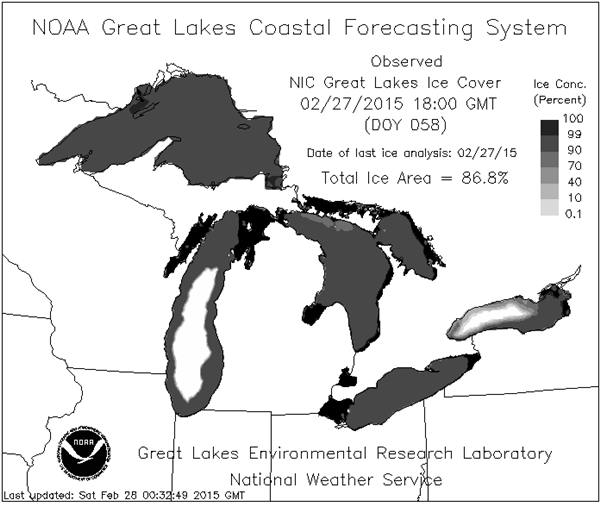| Back to Back Issues Page |
 |
|
Rhumb Line, Vol 3 Issue 2 -- New at www.great-lakes-sailing.com February 28, 2015 |
Rhumb Linea course that keeps a constant bearing
The Rhumb Line for Great Lakes Sailing is clear: to provide a comprehensive listing of ports around the Great Lakes basin and articles that cover a broad range of topics of interest to sailors. The purpose of Rhumb Line is to keep you up-to-date with new additions to Great Lakes Sailing in a brief, easy-to-scan and concise manner. I value not only your interest but also your time. February 2015 New at Great Lakes Sailing 1. New Ports 2. Toronto Boat Show 3. An Iconic Rifle 5. Ice Cover on the Great Lakes 5. Sailing Preparations - Some thoughts from John Rousmaniere 1. New Ports (a) Wallaceburg ON, near Lake St. Clair, is a sailor's hidden gem, located 9nm up a river that meanders through a very rich agricultural area. Established in 1804 as the Baldoon Settlement, it is named after one of Scotland's greatest heroes. It was sponsored by Lord Selkirk. The community struggled, especially during the War of 1812. Selkirk himself gave up on the settlement - but, luckily for us, the settlers themselves did not. Click here to visit
Wallaceburg, ON.
As they did last year, The Nautical Mind offered a gift certificate and this year the winner was Bryan Kelley from Toronto. My thanks to Bryan for coming out and The Nautical Mind for providing the gift. 
What may surprise readers is that this enormously successful rife was developed in Ontario – in the workshop of John Lee and his brother James Paris Lee. Their workshop was located in Wallaceburg, ON and the first shot from the first prototype was fired in 1878. The prototype can be found in the Wallaceburg and District Museum. It could be be fired rapidly – 20-30 rounds per minute - what was sometimes referred to as the mad minute. The record is 38 rounds in a 12 inch circle at 300 yards in 60 seconds. It can still be found with militaries and police services around the world and is carried by the Canadian Rangers in the high arctic. (Note: “emilie' comes from MLE – Magazine, Lee-Enfield; 'smellie' comes from SMLE – Short, Magazine, Lee-Enfield) 4. Ice Cover on the Great Lakes As we slip through the deep freeze of February, it might be instructive to get a glimpse of the ice coverage on the Lakes. Here is a chart of ice cover and average temperatures and a satellite image of the Lakes:
5. Sailing Preparations - Some thoughts from John Rousmaniere John Rousmaniere is an acclaimed sailor and author of 29 books on sailing – including a key reference work – The Annapolis Book of Sailing and Seamanship. He states in it that 'taking seriously the possibility of emergencies required a cautious state of mind known as forehandedness'. He described four specific rules to avoid such emergency situations: 1. Prepare the Boat: Look at everything from a 'worst-case' perspective (as a footnote to this, in the Feb 24 web issue of Ocean Sailing magazine there is an article on the hazards, often fatal, of freezing spray at sea. The build up of ice is so enormous that a boat can capsize easily. Death is often the result. The writer suggests that sailing in this weather should be avoided BUT – and I quote - “there may be times when a delivery needs to be made at a time of the year when ice accretion could occur”. This is schedule being given priority over safety. And people wonder????? Thanks for reading Rhumb Line. Your opinions, thoughts and comments do matter. If you have any comments or questions, please feel free to contact me here at Rhumb Line or at Great Lakes Sailing. If you like this newsletter, please do a friend and me a big favour and "pay it forward." If a friend DID forward this to you and if you like what you read, please subscribe. You will find a subscribe button on most pages of the site. |
| Back to Back Issues Page |

